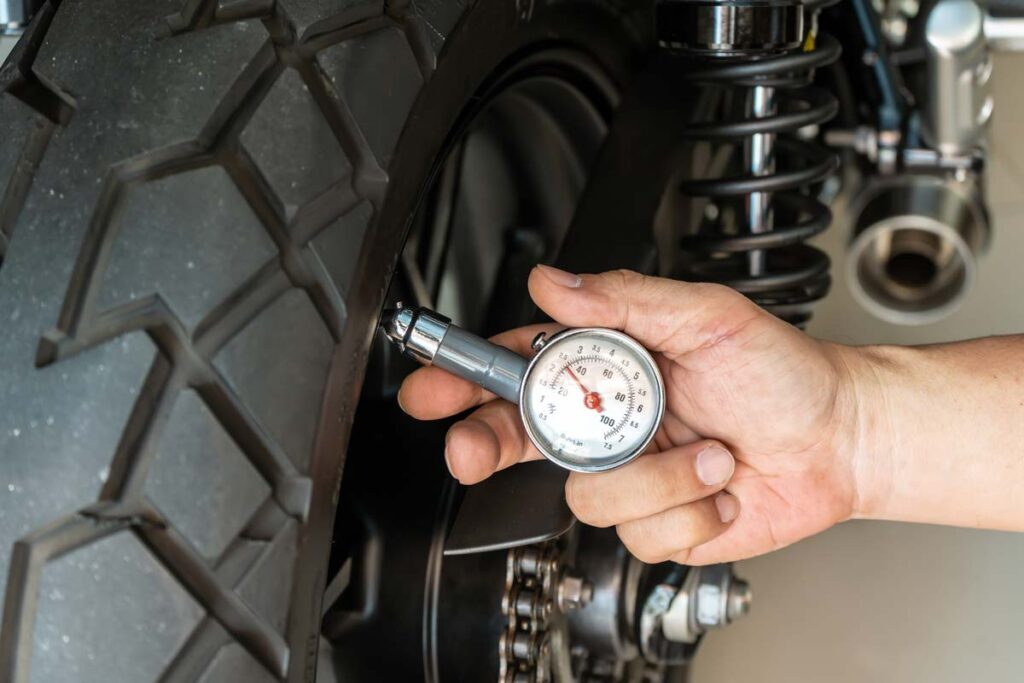T-CLOCS: Your Off-Road Motorcycle Pre-Ride Checklist


Before every ride, there’s a moment — maybe just a glance at the sky or the path ahead — that reminds you why you ride. But before you twist the throttle and roll out, there’s something else you need to do. Something that could make the difference between a great ride and one that doesn’t end the way you expect. That’s where the T-CLOCS checklist comes in.
The Motorcycle Safety Foundation developed this system as a reliable, repeatable way to make sure your off-road vehicle is ready and safe. Whether you’re preparing for a weekend ride or trail adventure, this off-road motorcycle pre-ride checklist is something you’ll want to keep in the back of your mind, if not your back pocket.
T-CLOCS stands for Tires and wheels, Controls, Lights and electrics, Oil and other fluids, Chassis and chain, and stands. It’s a more detailed evolution of the older “TCLOCK” system. While the acronym might not roll off the tongue, it does roll through everything that matters.
You won’t always need to run through the full inspection every single time, but before long trips or after your dirt bike’s been parked a while, you should. It’s a smart habit that helps you catch small problems before they become big ones.
Let’s break down each part of the T CLOCS checklist.
Start from the ground up. Your tires are your only contact with the road — it makes sense to pay attention here first.
Check air pressure with cold tires and inspect tread depth. Look for cracks, cuts, or embedded objects that could cause problems down the road. Spin the wheels and make sure the rims aren’t out of round. If your bike has spokes, check for any that are bent, broken, or missing.
Bearings should rotate smoothly, and your brakes, both front and rear, and should hold firm when applied individually.
Move up to the controls next. That includes handlebars, levers, cables, hoses, and the throttle.
Make sure everything is straight, tight, and responsive. Handgrips shouldn’t be loose. Cables need to be free of fraying or kinks. Run your hand along the throttle — it should snap back cleanly and not stick when you turn the handlebars. Hoses should be firm, not brittle or bulging. It’s also worth checking the levers and pedals for any bending or cracks that could cause issues mid-ride.
Lights do more than just help you see, they help others see you.
Check that your headlights, brake lights, and turn signals all illuminate as expected. Make sure switches work without hesitation. Clean off mirrors and ensure they’re adjusted for a proper field of view. You should also glance over your wiring, as exposed or frayed wires can be a hazard.
You don’t want a dead motorcycle battery, so you should always check it before riding. Look at the terminals for corrosion and make sure the vent tube isn’t kinked. If you’ve got a multimeter handy, check the voltage to ensure it’s holding a charge.
Next on your motorcycle inspection list — all the essential fluids.
Oil is the obvious one, but don’t forget coolant, brake fluid, and even fuel lines. All levels should be checked when the bike is cool and on level ground. Look for signs of leaks, like dark spots under the bike or residue on engine parts can be early indicators.
Also, take a moment to check gaskets and seals. If anything looks cracked, soft, or brittle, it may be time for replacement.
The frame is your foundation — you want it solid.
Scan it for cracks, rust, or areas where paint is bubbling or flaking off. That could be hiding damage. Tug on the forks and swingarm to check for unwanted movement. If your bike has a chain, check its tension and lubrication.
A too-loose or too-tight chain will affect handling and longevity. For belt-drive bikes, inspect the belt for wear or missing teeth, and don’t skip the fasteners. Loose bolts or missing cotter pins can cause bigger problems than you might think.
Often overlooked, your kickstand and center stand deserve a quick look too.
The side stand should deploy and retract smoothly, holding the bike firmly without wobble. Springs should have enough tension to keep things secure. The center stand — if you use it — should also be stable and free from cracks or bends.
If your stand has a pad or footplate, make sure it’s intact. A missing or damaged one can make parking on soft ground unpredictable.
You don’t have to go over the entire T-CLOCS checklist every single day but make it a habit to scan your bike regularly. Weekly for casual riders, daily for more frequent riders, and before any long rides.
If you’re wondering what parts to check on an off-road motorcycle before riding — this is it. T-CLOCS has your back, so your ride doesn’t leave you stranded. Stay safe out there.
Disclaimer: While we endeavor to keep the information on our blog up to date and correct, Maxtrade (Coolster) makes no representations or warranties of any kind, express or implied about the completeness, accuracy, reliability, suitability, or availability with respect to the website or the information, products, services, or related graphics contained on the website for any purpose. Any reliance you place on such material is therefore strictly at your own risk.
Register